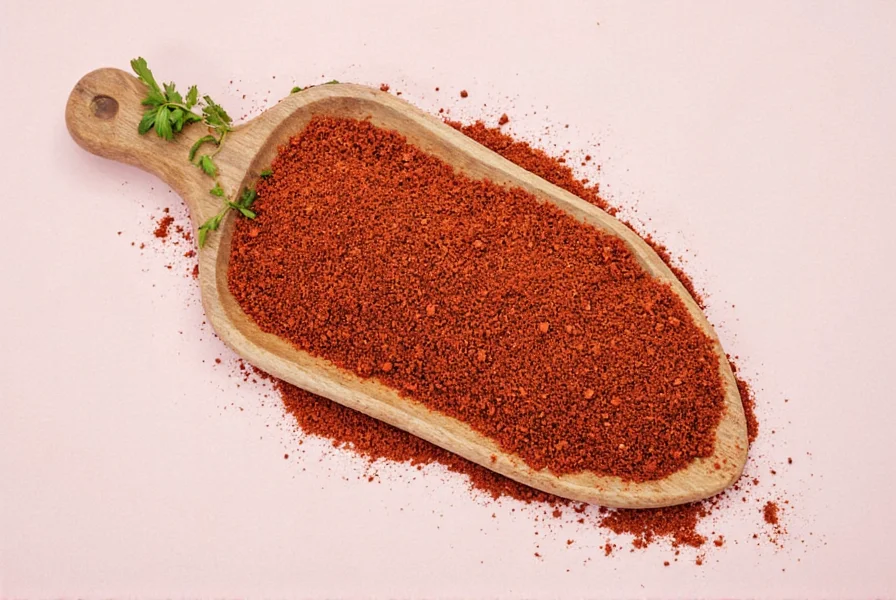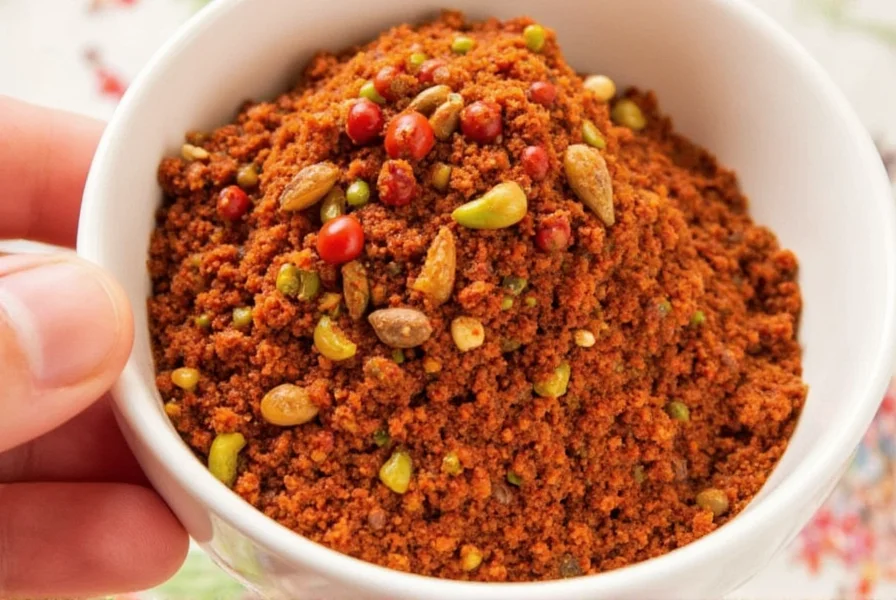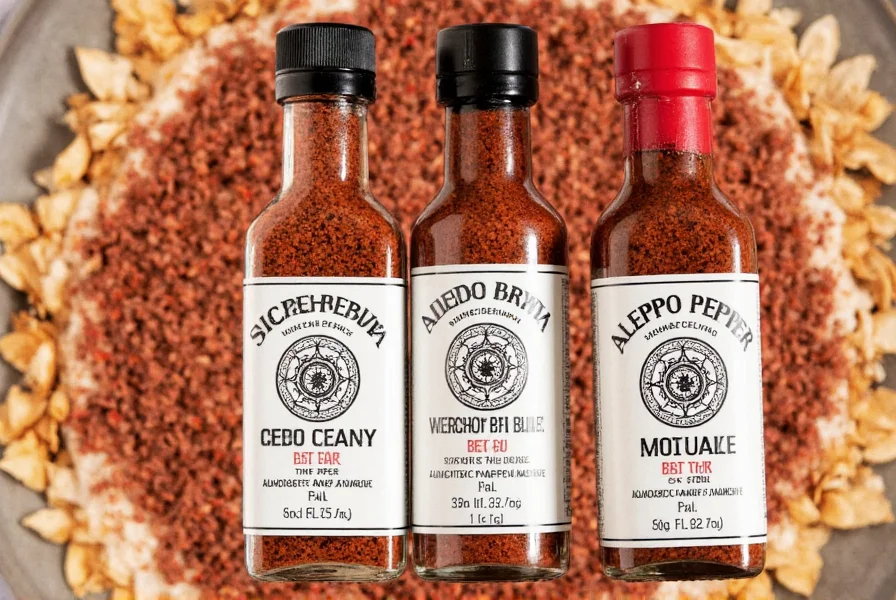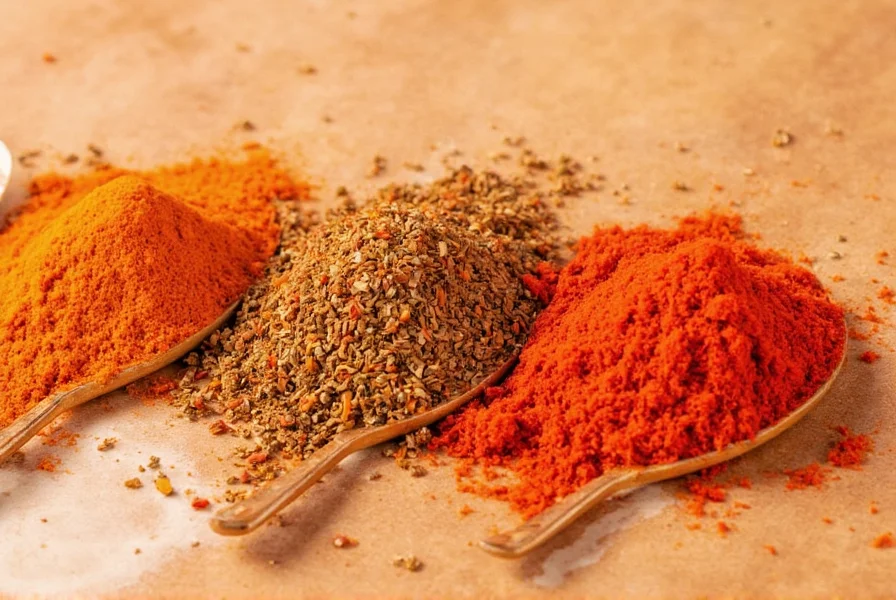Table of Contents
Introduction
Aleppo pepper enhances curry with balanced heat and fruity depth. To use it effectively, toast whole peppers for maximum flavor, start with 1/2 teaspoon per serving, and pair with spices like cumin and turmeric. This guide covers step-by-step usage tips, recipes, buying advice, and answers to common questions.

How to Use Aleppo Pepper in Curry
Follow these proven techniques to maximize Aleppo pepper's flavor in curry:
1. Toast Whole Peppers First
For optimal flavor, toast whole Aleppo peppers in a dry skillet over medium heat for 1-2 minutes until fragrant. This releases essential oils and intensifies the fruity notes. Let cool before grinding.
2. Measure Precisely
Start with 1/2 to 1 teaspoon per serving (4-6 people). Its heat builds gradually, so add incrementally. For mild curries, begin with 1/4 tsp; for authentic Middle Eastern dishes, use up to 1.5 tsp.
3. Timing Matters
Add early for mellow, integrated flavor (with onions/garlic). Stir in near the end for sharp, bright heat. Avoid high-heat frying to prevent bitterness.
4. Strategic Pairing
Combine with:
- Spices: Cumin, coriander, turmeric, garam masala
- Liquids: Coconut milk, yogurt, tamarind paste
- Fats: Ghee, olive oil, or butter for smooth integration

Why Aleppo Pepper in Curry?
Aleppo pepper elevates curry through unique properties:
- Controlled Heat: 10,000 SHU (vs cayenne's 30,000-50,000 SHU) provides gentle warmth without overwhelming
- Fruity Complexity: Natural notes of raisin and tomato complement spice blends
- Color Enhancement: Rich red-orange hue from carotenoids without artificial dyes
- Cross-Cultural Versatility: Works in Indian, Thai, Japanese, and fusion curries
| Feature | Best Choice | Good Option |
|---|---|---|
| Whole vs. Ground | Whole (toasting yourself) | Pre-ground (for convenience) |
| Origin | Syria (authentic) | Other regions (may vary in quality) |
| Processing | Hand-picked and sun-dried | Mechanically processed |
| Flavor Profile | Smoky, fruity, and slightly sweet | Milder or more bitter |
Top recommended products:
- Marash Aleppo Pepper (Whole): Premium quality with authentic Syrian flavor profile
- La Cucina Aleppo Pepper (Ground): Balanced heat and rich aroma for quick recipes
- Alba Aleppo Pepper (Organic): Certified organic with no additives

Frequently Asked Questions
What makes Aleppo pepper different from regular chili powder in curry?
Aleppo pepper has a unique balance of mild heat (about half the spiciness of cayenne) with a subtle fruitiness and slight tang. Unlike regular chili powder which can be one-dimensional, Aleppo pepper adds complexity without overwhelming other spices in curry. Its gradual heat build-up allows for layering flavors in a way that standard chili powders cannot achieve.
Can Aleppo pepper replace Kashmiri red chili in Indian curry recipes?
Yes, Aleppo pepper can be a good substitute for Kashmiri red chili as both provide moderate heat with rich color. However, Aleppo pepper has a more pronounced fruity note, so you might want to use slightly less (about 3/4 the amount) to maintain balance. For authentic Kashmiri dishes, you may want to blend Aleppo pepper with a small amount of paprika to better replicate the traditional flavor profile.
How much Aleppo pepper should I use in a standard curry recipe?
Start with 1/2 to 1 teaspoon for a curry serving 4-6 people. The heat builds gradually, so it's better to start small and adjust to taste. Remember that toasting the pepper before use intensifies its flavor. For milder curries, begin with 1/4 teaspoon and increase as needed. For authentic Middle Eastern curries, you can go up to 1.5 teaspoons.
Does Aleppo pepper work well in all types of curry (Indian, Thai, Japanese, etc.)?
Yes, Aleppo pepper is remarkably versatile. It complements Indian curries beautifully, adds depth to Thai curries (especially those with coconut milk), and can even enhance Japanese curry by adding a subtle warmth without overpowering the distinctive roux flavors. Its unique flavor profile bridges culinary traditions, making it particularly valuable in fusion dishes that blend different curry styles.
Can I use Aleppo pepper in place of cayenne in curry recipes?
Absolutely, and it's often preferred as it provides a more nuanced flavor. Use about twice as much Aleppo pepper as you would cayenne since it's milder (Aleppo is about 10,000 SHU vs cayenne's 30,000-50,000 SHU). This substitution not only reduces the immediate heat but also adds aromatic complexity that cayenne lacks, creating a more sophisticated curry profile.
How should I store Aleppo pepper to maintain its flavor for curry preparation?
Store in an airtight container away from light and heat. Whole peppers keep their flavor longer (up to 2 years), while ground Aleppo pepper is best used within 6-12 months for maximum potency in your curries. For extended shelf life, consider storing in the freezer, which preserves the delicate oils and volatile compounds that give Aleppo pepper its distinctive flavor.
Is Aleppo pepper the same as Turkish isot pepper?
While similar, they're not identical. Turkish isot pepper tends to be slightly hotter and smokier, while Aleppo pepper has more fruitiness. They can be used interchangeably in curry recipes with minor adjustments to quantity. True Aleppo pepper comes specifically from the Aleppo region of Syria, though authentic production has been affected by recent conflicts, leading to many "Aleppo" peppers actually being produced in Turkey using traditional methods.
Does Aleppo pepper affect the color of my curry?
Yes, Aleppo pepper contributes a beautiful deep red-orange hue to curries without the need for artificial coloring. This natural coloring comes from its high carotenoid content, which also provides antioxidant benefits. Unlike some commercial curry powders that use fillers for color, Aleppo pepper imparts both vibrant color and complex flavor simultaneously.
Recipes: Aleppo Pepper in Action
Now that you know how to use Aleppo pepper, let's put it to work with a few delicious recipes:
1. Classic Chicken Curry with Aleppo Pepper
This recipe uses Aleppo pepper to give a warm, smoky undertone to a classic chicken curry.
- Ingredients: Chicken, onions, garlic, ginger, tomatoes, garam masala, Aleppo pepper, turmeric, salt, oil
- Instructions: Sauté onions, add garlic and ginger, then cook the chicken. Stir in tomatoes, spices, and Aleppo pepper. Simmer until the chicken is tender.
2. Creamy Vegetable Curry with Aleppo Kick
Perfect for vegetarians, this curry uses Aleppo pepper to add a layer of complexity without overwhelming the vegetables.
- Ingredients: Cauliflower, potatoes, carrots, coconut milk, curry paste, Aleppo pepper, turmeric, salt
- Instructions: Cook the veggies, add curry paste and Aleppo pepper, then stir in coconut milk. Simmer and serve with rice or naan.
3. Aleppo Butter Chicken
A fusion dish that brings together Indian and Middle Eastern flavors. Aleppo pepper adds a smoky, spicy note to the buttery sauce.
- Ingredients: Chicken, butter, garlic, cream of mushroom soup, Aleppo pepper, garam masala, salt
- Instructions: Sauté garlic, add chicken and spices, then stir in butter and cream of mushroom soup. Finish with Aleppo pepper for extra flair.
Conclusion
Aleppo pepper transforms curry by adding nuanced heat and fruity complexity. Master these techniques: toast whole peppers, measure precisely, time additions strategically, and pair with complementary ingredients. Whether you're making traditional Indian curry or fusion dishes, this spice delivers professional-level flavor with minimal effort.












 浙公网安备
33010002000092号
浙公网安备
33010002000092号 浙B2-20120091-4
浙B2-20120091-4